F35 pilot who ejected over South Carolina is heard pleading for an ambulance in bizarre 911 call from resident’s house and admitting ‘I’m not sure where my plane is’
The 911 call made after an F35 pilot ejected over South Carolina last weekend and landed in a residential area has been released.
During the bizarre call, the North Charleston resident who called 911 can be heard trying to explain to an operator what was happening after the pilot landed in his backyard.
Finally, the pilot gets on the phone to tell the operator that “we need to get the rescue operation underway” and that he doesn’t know where his plane ended up.
Officials have said the stealth bomber pilot had to abandon his plane due to a technical glitch.
The pilot, 47, says he is doing ‘fine’ after falling 600 metres, but adds that his back hurts as he begs for an ambulance.
The Marine Corps revealed this week that the plane climbed to another 1,000 feet and flew another 60 miles before crashing in a rural area. It took investigators a full day to fine the stricken plane.
A U.S. Marine Corps F-35B Lightning II takes part in an aerial display during the 2022 Singapore Airshow at the Changi Exhibition Center in Singapore, on February 15, 2022
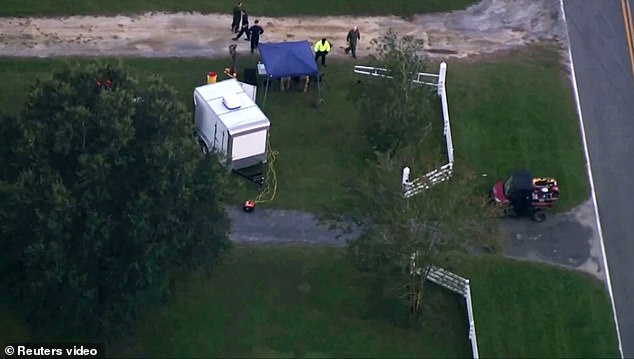
The F-35 crashed only about 80 miles from its base, north of Charleston, South Carolina
The investigation into the freak crash is ongoing and could take months, officials said.
“We have a pilot in the house, and I think he landed in my backyard, and we’re trying to see if we can please get an ambulance to the house,” the resident said. He added that the pilot “looked good.”
‘Ma’am, a military plane has crashed. I’m the pilot. We need to get the rescue started,” the pilot said. ‘I’m not sure where the plane is. It might have crashed somewhere. I ejected.”
Later during the telephone conversation he made another plea for medical help.
“Ma’am, I’m a pilot in a military plane and I’ve been deported. So I just parachuted to the ground. Can you please send an ambulance?’ said the pilot.
The Marines describe the pilot as an experienced pilot with decades of experience in the cockpit.
In a separate eight-minute call released to the AP on Thursday, an unidentified official tried to explain that they had “a pilot with his parachute” but no information about what happened to his plane or about a crash.
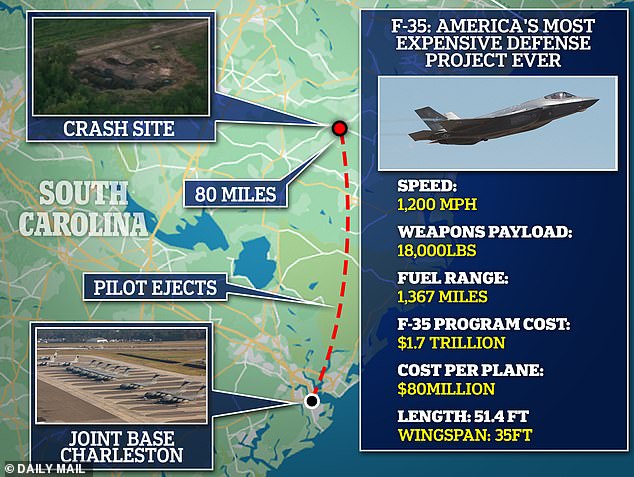
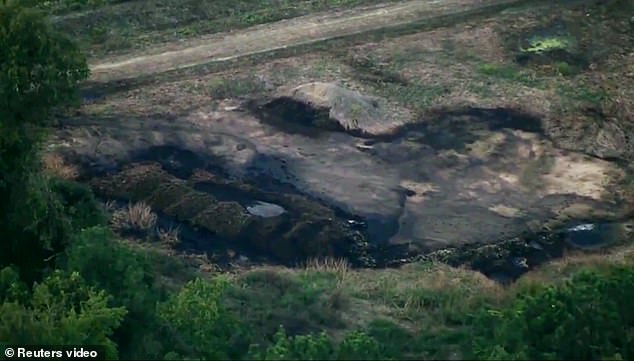
The scorched earth of the crashed fighter jet can be seen in South Carolina on Monday
He said that “the pilot lost sight of him on the way down because of the weather.”
The official also recalled hearing a “rather loud noise” about 25 minutes earlier that “sounded something like a tornado, possibly an airplane.”
The Marine Corps said Thursday that a feature on fighter jets intended to protect pilots in emergency situations could explain how the F-35 managed to continue its journeys.
They said that while it was unclear why the plane continued to fly, the flight control software would have worked to keep it stable when the pilot’s hands were no longer on the controls.
‘If the plane is stable in level flight, it will try to stay there. “If the aircraft was in a designated climb or descent, the aircraft will maintain a 1G status during that climb or descent until ordered otherwise,” the Marine Corps said in a statement.
“This is to save our pilots if they become incapacitated or lose their situational awareness.”
Other questions about the crash remained, most notably why the plane was not tracked as it continued to fly over South Carolina and how it could have taken more than a day to find a huge fighter jet that had flown over populated, albeit rural, areas .
The Marines said features that erase a jet’s secure communications in the event of an ejection — a feature designed to protect both the pilot’s location and the aircraft’s classified systems — could also require complex efforts to find.
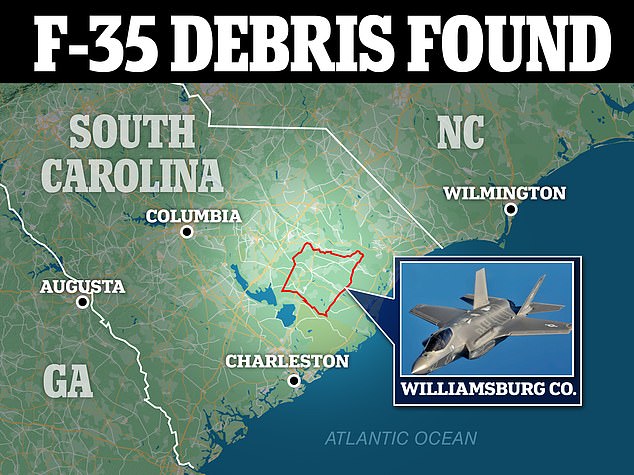
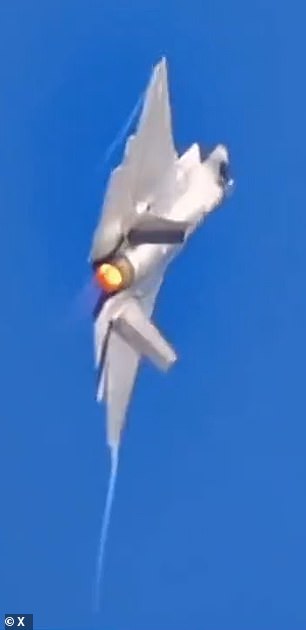
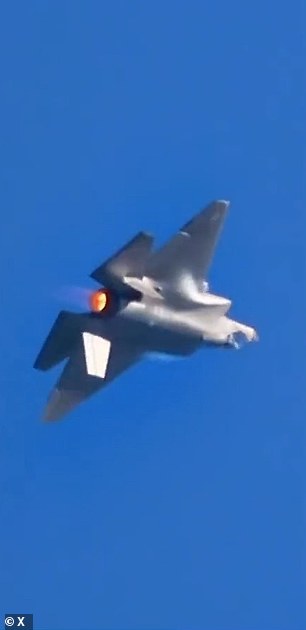
File images show an F-35 flying at a terrifying angle
“Normally, aircraft are tracked via radar and transponder codes,” the Marines said. “If the pilot ejects, the aircraft is designed to erase (or ‘zero’) all secure communications.”
The plane would have continued to broadcast an identifier on an open channel to identify itself as friend or foe – but even on an unclassified communications channel, air traffic control might not have been able to pick up the signal, depending on how powerful the radar was, the weather at the time, how high the plane was flying and the terrain, the Marines said.
They said thunderstorms and low cloud ceilings further hampered the search for the plane.
“Combined with the stealth capabilities of the F-35, tracking the aircraft had to be done by non-traditional means,” the service said in its statement.
The incident is still under investigation and the results of an official review board could take months.
However, the Marines said the feature that allowed the plane to fly may have saved the life not only of the pilot, but also of others on the ground.
‘The good news is that it seemed to work as advertised. The other positive in this case is that by flying away, the F-35 avoided crashing in a densely populated area surrounding the airport, and luckily crashed in an empty field and wooded area,” the statement said.
The Marines were unable to locate the downed plane for 28 hours, prompting a humiliating appeal on social media for help finding the missing $80 million plane.
Richard Aboulafia, an aviation expert, told us The New York Post the pilot likely flew the stealth fighter without any tracking capabilities activated, hampering the search.
“If you turned on the built-in device, it would be easy to track,” he said.
“But this is a stealth aircraft. If you don’t turn on that specific device, it will be difficult to make contact. He or she probably didn’t have much time to respond.”
Once it was located, a Marine Corps team was dispatched to secure the wreckage and a second team, an aircraft accident investigation team, was sent to the site.
But questions are now being asked why the plane was allowed to fly, given its proximity to storms and concerns about its sister planes.
The National Weather Service has issued a “special weather statement” for the Charleston area, warning of winds of 55 mph.
They also warned of thunderstorms, heavy rainfall and “isolated tornadoes.” Radar images from Sunday around 2 p.m. indeed show thunderstorms throughout the area.
